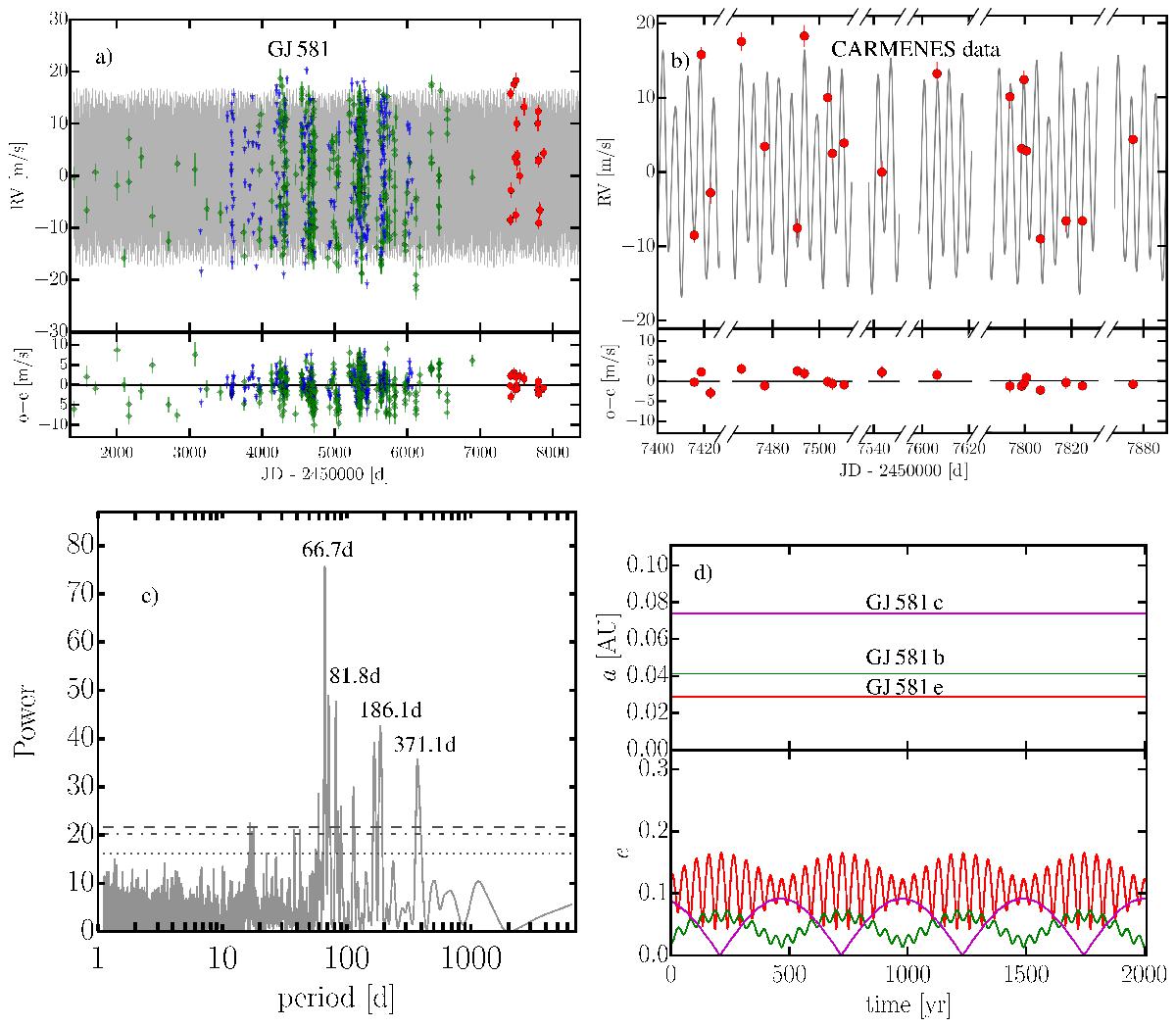Fig. 8

Panel a: available Doppler measurements for GJ 581 obtained with HIRES (green diamonds), HARPS (blue triangles) and CARMENES (red circles) mutually agree when fitted with a three-planet self-consistent N-body model. Panel b: time series plot for only the CARMENES data show that they are fully consistent with the best-fit three-planet dynamical model yielding an rms = 1.64 m s-1, the lowest among the three data sets. Panel c: GLS power spectrum of the residuals from the three-planet dynamical model for GJ 581. The strong peak at 66.7 d was earlier attributed to a planet designated GJ 581 d, but is now believed to be induced by stellar activity. Several other peaks with periods near 81.8 d, 186.1 d and 371.2 d are significant, but unlikely of planetary nature and most likely also related to activity and the window function. Panel d: dynamical evolution of the best three-planet fit for the GJ 581 planetary system. This fit is stable for at least 10 Myr, but for illustrative purposes we show only a 2000 yr extent of the N-body integration, which clearly shows the perfectly synchronized orbital evolution. In this best-fit configuration the eccentricities of the three planets are oscillating with a period of ~500 yr in addition to the ~50 yr secular perturbations between GJ 581 e and GJ 581 b.
Current usage metrics show cumulative count of Article Views (full-text article views including HTML views, PDF and ePub downloads, according to the available data) and Abstracts Views on Vision4Press platform.
Data correspond to usage on the plateform after 2015. The current usage metrics is available 48-96 hours after online publication and is updated daily on week days.
Initial download of the metrics may take a while.


